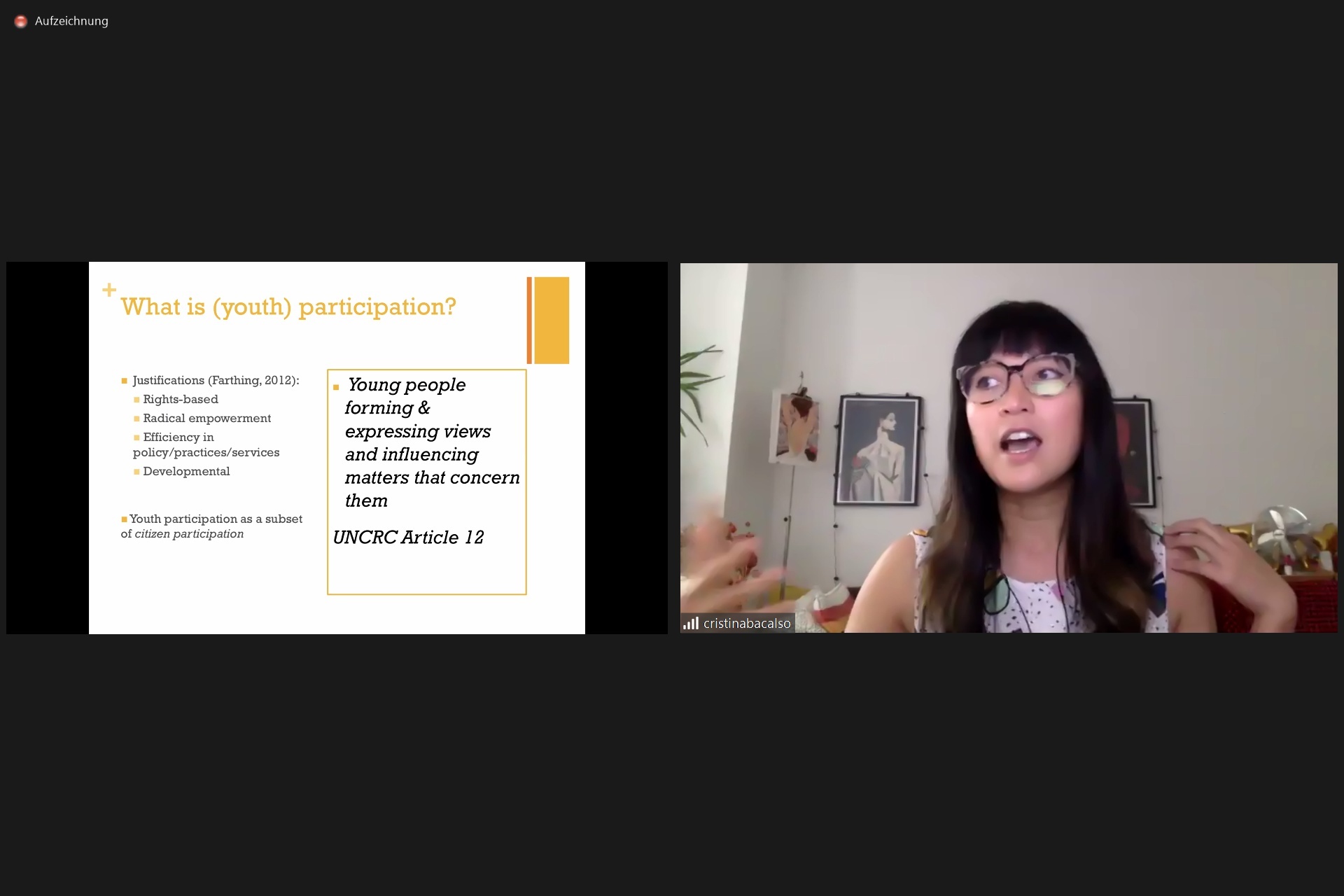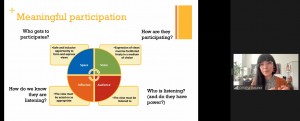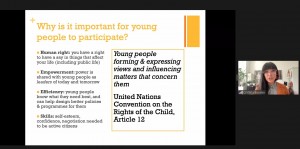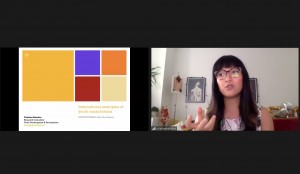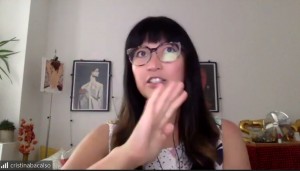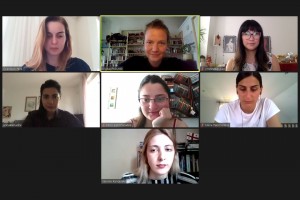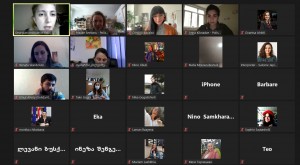How to make participatory events meaningful and inclusive!
A report on the web seminar by Cristina Bacalso
The final seminar of our #GEOYOUTH2020 online train the trainers-series was held by Cristina Bacalso, an independent research consultant with a specialisation in public policies for adolescent and youth development based in Berlin. In her presentation, she focused on examples and best practices from international youth consultations including for UNICEF Armenia, EU Youth Dialogue, the Office of the Minister for Children & Youth Affairs of the Republic of Ireland, and UNICEF Europe & Central Asia.
Cristina kicked-off her talk with a brief discussion on what (youth) participation actually means and defined it as a subset of citizen participation more broadly. Based on research by Farthing, Lundy, and Hart, she elaborated on indicators for meaningful participation as opposed to non-participation, including the utilisation of youth as a figurehead without actually involving them in decision-making processes.
This theoretical debate prepared a good base to talk about examples from four international consultations some of which Cristina had previously been involved in. Based on the Lundy-model (see picture above), she evaluated the methods of youth participation as well as the meaningfulness of the respective processes.
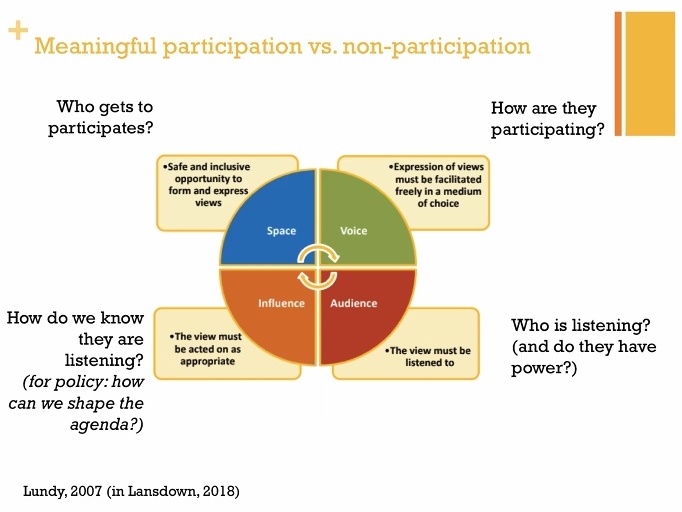 With UNICEF Armenia, she conducted a workshop that encouraged young people to create and share their vision for their country, including exercises on imagining an ideal future, the current state of affairs, and creative solutions on how to bridge the gap between those two. The results were shared with the Armenian government and served as a basis for future UNICEF policies in the country. While it was a fun activity that did not require prior knowledge and was therefore inclusive of youth from all backgrounds, they were not included in the report drafting process, nor were they informed on how their input shaped future decisions. Another learning was that speakers should contextualise their inputs for participants to identify key messages.
With UNICEF Armenia, she conducted a workshop that encouraged young people to create and share their vision for their country, including exercises on imagining an ideal future, the current state of affairs, and creative solutions on how to bridge the gap between those two. The results were shared with the Armenian government and served as a basis for future UNICEF policies in the country. While it was a fun activity that did not require prior knowledge and was therefore inclusive of youth from all backgrounds, they were not included in the report drafting process, nor were they informed on how their input shaped future decisions. Another learning was that speakers should contextualise their inputs for participants to identify key messages.
Her second example concerned a questionnaires and focus groups exercise across the EU in the framework of the 6th EU Youth Dialogue. National working groups organised by youth organisations came together in a joint conference and developed 11 Youth Goals to input the EU Youth Strategy 2019-2027. This institutionalised participatory format is supported by substantial funding and addresses a broad array of topics. A possible downside of this is a lack of specificity in the recommendations and a narrow representation of model students rather than of youth of more diverse backgrounds.
Thirdly, Cristina reported on a roundtable discussion on mental health issues with the Office of the Minister for Children & Youth Affairs in Ireland. Youth were asked “what helps” and “what hurts” (positively or negatively impacts mental health), followed by workshops on selected topics and a voting process on priorities. The resulting report emphasized these key priorities for the Irish Health Executive Service. The trainer praised the fact that youth participation is enshrined in government policies and that diversity was guaranteed by its voluntary nature and geographical representation. Given this sensitive topic, facilitators require special prior training.
Finally, an adolescent consultation including almost 6,000 young people through regional meetings and an online survey for UNICEF Europe & Central Asia focused on age limit policies – at what age young people are or should be given certain rights and duties. Participants were given an input about current legislation, so they did not require prior thematic knowledge and were able to discuss their experiences with current policies in-depth. However, since the exercise informed an advocacy campaign, it was difficult to report its impact back to them.
Following Cristina’s presentation, the Georgian trainers discussed how to target a diverse group of participants, including national minorities such as Armenians and Azeri. To make both the exchange and output more meaningful, Cristina suggested to focus on the audiences the Manifesto is supposed to reach, how the participants of the youth summits can be included in the drafting and disseminating process, and how GIP as an organisation can serve as a platform for their messages.
Asked about the volume of input the group should be given beforehand, her experience suggested that the more specific a discussion topic is, the more prior input and contextualisation is needed. She concluded with 7 Golden rules of youth participation and one last advice: “Youth are experts on their lives – use their expertise as a basis for policy recommendations, not the other way around!”
Read on: Esther Kern on How to structure events for meaningful youth participation!
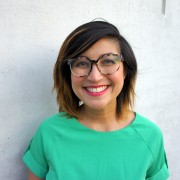
Cristina Bacalso, Youth Policy Consultant
Project term
01 March- 31 December 2020
Our supporters
The project is funded by the German Federal Foreign Office in the framework of the programme “Expanding Cooperation with Civil Society in the Eastern Partnership Countries and Russia”.


